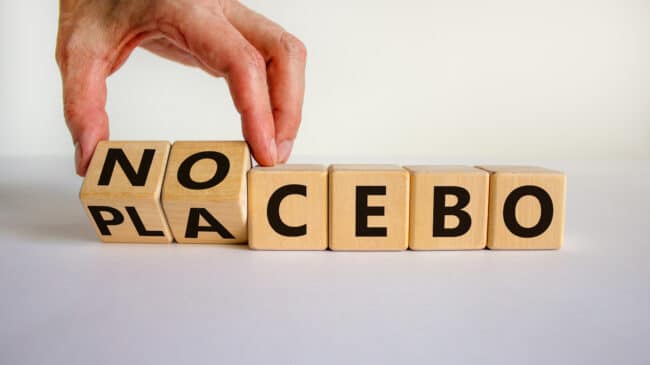Double-blind placebo trials are considered the gold standard for evaluating the safety and efficacy of new pharmaceuticals. By ensuring neither the participants nor the researchers know who is receiving the treatment or placebo, bias is minimized, and outcome reliability is strengthened.
However, psychedelic drugs have unique characteristics that challenge the feasibility of double-blind placebo trials. Psychedelic trials often face “functional unblinding,” where participants can easily identify whether they are receiving the active treatment due to the intense perceptual and emotional effects induced by these substances. Given this limitation, the U.S. Food and Drug Administration (FDA) should reconsider double-blind placebo requirements for psychedelic clinical investigations.
As the therapeutic potential of psychedelics gains increasing recognition—particularly for neurodegenerative disorders and mental health conditions like depression, anxiety, and post-traumatic stress disorder (PTSD)—the FDA must consider alternative trial designs. Future administrations should review other possible methods that will uphold safety and efficacy standards while addressing the unique challenges posed by psychedelics.
None of this should be taken to downplay the problem when trial participants can tell whether they’ve received the active drug or a placebo. Functional unblinding can introduce significant bias, particularly in outcomes relying on self-reported measures of mental health or well-being. Participants aware of their treatment status may report exaggerated benefits due to expectancy effects, while those in the placebo group may experience disappointment or a “nocebo” effect when symptoms worsen because participants are aware they did not get the treatment.
The FDA recently rejected MDMA-assisted therapy for PTSD due to problems with this functional unblinding, despite robust clinical evidence supporting its efficacy. Clinical data collected during two nearly identical randomized trials demonstrated MDMA’s effectiveness in improving PTSD symptoms. One of those studies showed that 67% of participants in the MDMA treatment arm no longer met the diagnostic criteria for PTSD following three dosing sessions with MDMA, compared to about 32% in the placebo group who underwent the therapy sessions but did not receive an active drug.
Berra Yazar-Klosinski, Chief Scientific Officer at Lykos Therapeutics, emphasized the strength of the findings, stating, “In totality, these results support [that] MDMA in combination with psychological intervention provides significant and meaningful reductions in PTSD symptoms and functional impairment in patients with PTSD.” If approved, MDMA would represent the first new PTSD treatment in decades and a major milestone for the broader movement to expand access to psychedelics.
However, FDA staff raised concerns that functional unblinding may have inflated the results. “Although we do have two positive studies, the results are in the context of dramatic functional unblinding,” noted Dr. David Millis, an FDA clinical reviewer. These concerns were central to the FDA’s decision to reject the sponsor’s new drug application for MDMA as a PTSD treatment.
Psychedelic drugs will continue to be rejected if double-blind placebo trials are required. But there are other options.
Innovative alternative approaches to psychedelic trials
Alternative trial designs, such as using mimetic psychoactive placebos (which mimic aspects of the drug) or open-label trials, recognize the distinct nature of psychedelics and ensure that promising therapies can meet regulatory standards.
Instead of inert placebos, trials could use psychoactive substances, such as low doses of cannabis, ketamine, or anxiolytic drugs like benzodiazepines, that mimic some aspects of the psychedelic experience without triggering full perceptual disturbances. Substances that produce mild euphoria, relaxation, or slight perceptual changes could be used to simulate the sensory alterations associated with psychedelics without prompting transformative or profound subjective experiences.
Using mimetic psychoactive placebos would reduce the likelihood of functional unblinding. If participants in both the experimental and control groups experience similar side effects or mild psychoactive sensations, it becomes significantly harder for them to discern whether they are receiving the active drug or the placebo.
Moreover, the unique effects of the experimental drug may be isolated better when its therapeutic effects are compared to those of a psychoactive placebo. For instance, comparing the adverse effect profiles of a psychedelic drug and a mildly psychoactive control can provide more nuanced safety data. Researchers can distinguish common side effects of psychoactive substances—such as mild nausea, dizziness, or euphoria—from those unique to the drug under investigation. Such comparisons can inform risk assessments and improve the design of future trials, ensuring both participant safety and the reliability of the data.
One potential concern is that participants may develop hypotheses about their group allocation based on subtle differences in effects. Rigorous training for study personnel and carefully designed scripts can help mitigate this risk.
Another alternative to double-blind placebo trials is allowing trials to investigate low, medium, and high doses of the psychedelic drug without including a placebo group. Researchers could easily examine dose-response data without exposing participants to the nocebo effect. However, having a non-active placebo allows for better safety evaluation.
Placebo-controlled trials, despite functional unblinding risks, remain valuable for better safety signal identification. A safety signal is information on a new or unknown adverse event that is potentially caused by a medicine and that warrants further investigation. Combining different trial designs can analyze dose-response information from placebo-free trials and safety and efficacy contextualization (safety and effectiveness interpretation through data from various trial designs to assess benefits and risks comprehensively) from placebo-controlled trials. Researchers can explore how varying doses of treatment affect an outcome, focusing on the relationship between dose and therapeutic or adverse events.
One final option is allowing for open-label trials. Open-label trials eliminate the placebo arm entirely by providing all participants with active treatment. Clinical outcomes are compared to pre-existing historical data or external control datasets to evaluate safety and efficacy.
On one hand, this option eliminates ethical concerns of denying treatment to individuals who may have severe mental health or terminal illnesses and where withholding treatment may increase suffering. Additionally, open-label trials are relatively cost-effective because blinding procedures and placebo production are unnecessary.
However, without a blinded control group, participant expectations could influence outcomes, making it harder to attribute improvements solely to the treatment. Biased data becomes significantly more likely. Given this, researchers should consider combining open-label trials with a small, blind control arm in early phases to validate assumptions before larger studies.
As an example, in studies evaluating psilocybin for end-of-life anxiety, an open-label approach could provide useful data by comparing treated participants’ outcomes to external datasets of patients receiving standard-of-care therapies, such as counseling or pharmacologic anxiolytics.
Recommendations
Psychedelic drugs have distinctive effects that make their clinical investigation unfit for traditional double-blind placebo trials. The Trump administration (and future administrations) should consider the following recommendations:
Recommendation #1: Implement alternative trial designs
Functional unblinding compromises data validity. Placebo-induced nocebo effects exacerbate ethical challenges inherent in double-blind placebo trials. Alternative trial designs, including mimetic placebos, dose-response studies, and open-label trials with historical controls, offer effective ways to generate robust safety and efficacy data while addressing the limitations of double-blind placebo trials.
Future administrations should issue tailored guidance that recognizes the distinctive characteristics of psychedelics and the limitations of traditional double-blind placebo designs.
In doing so, regulators can minimize harm to participants and accelerate the development and delivery of promising therapies. Future administrations should aim to align research goals with patient welfare. Such reforms will facilitate timely access to transformative therapies for those in need.
Recommendation #1.2: Establish safety and monitoring criteria specific to psychedelics for alternative trial designs
Future administrations should consider and identify specific safety protocols and standards for alternative trial designs to ensure consistency and validity of data outcomes.
The FDA should recommend training programs for trial investigators and session monitors to ensure consistent and accurate reporting of abuse-related adverse events and other safety signals specific to psychedelics. Administration should encourage sponsors to engage in early discussions about trial designs and adverse event monitoring plans, particularly for abuse-related effects. This collaboration can streamline the approval process by resolving potential concerns before studies begin.
The FDA should specify criteria for selecting and validating active placebos, including their safety, tolerability, and appropriateness for mimicking non-therapeutic aspects of psychedelic drugs. Such criteria ensure consistency and reliability across studies.
The FDA may consider nuanced safety analyses, such as comparing adverse event profiles across active treatments and controls, to differentiate between common psychoactive effects and those unique to psychedelics. This will enable more accurate risk-benefit assessments.
Recommendation #2: Use real-world evidence (RWE) to evaluate post-market drug safety and efficacy
Real-world data (RWD) and real-world evidence (RWE) could ensure access to promising psychedelic treatments while upholding rigorous safety and efficacy standards.
The FDA currently leverages RWE to monitor and evaluate the post-market safety of approved drugs and is increasingly recognizing its potential to inform regulatory decisions, including drug approvals and post-approval studies. However, a future administration should broaden the use of RWE so that it can also be used in pre-market evaluations. Existing historical and international evidence offers valuable data on the real-world benefits and risks of psychedelic treatments.
RWD refers to information related to patient health status and the delivery of health care that is routinely collected from various sources. These include electronic health records (EHRs), medical claims data, product or disease registries, and data from digital health technologies. Meanwhile, RWE is made up of the clinical insights derived from analyzing RWD. It provides information about the use, potential benefits, and risks of medical products outside the controlled environment of clinical trials.
There is already a significant amount of RWE on psychedelics. Psychedelic substances have a long history of use, with evidence indicating their application in traditional medicinal and spiritual practices for thousands of years. For example, the peyote cactus was used as early as 14,000 BCE in present-day Mexico, and psilocybin mushrooms were integral to spiritual and healing practices in Indigenous cultures like the Ojibwa of the Great Lakes region.
Moreover, several countries have integrated psychedelics into clinical settings for pharmaceutical purposes. In 2023, Australia authorized psychiatrists to prescribe MDMA and psilocybin for treatment-resistant depression and PTSD within controlled clinical environments. Since 2014, Geneva University Hospital has offered Swiss patients psychedelic-assisted therapy for compassionate use in last-resort cases. The Swiss Federal Office of Public Health has issued over 1,000 exceptional permits to around 60 therapists, facilitating an estimated 2,000-3,000 treatments with psychedelics like MDMA, LSD, and psilocybin. Last year, the Canadian government announced a substantial investment of nearly $3 million to support clinical trials examining psilocybin-assisted psychotherapy.
A future administration could use historical and modern international evidence to expand its use of RWE to pre-market evaluations for psychedelic therapies. The centuries-long ceremonial and medicinal applications of psychedelic substances could provide a robust foundation of observational evidence on their safety and efficacy. Meanwhile, RWE from countries such as Australia, Canada, and Switzerland—where psychedelics are already being integrated into therapeutic and clinical frameworks—could be implemented into regulatory decisions. Broadening the use of RWE to pre-market evaluation could streamline access to innovative treatments while ensuring proper safety and efficacy standards.

